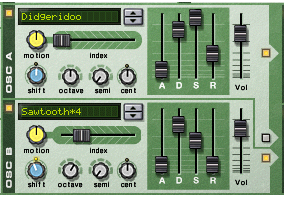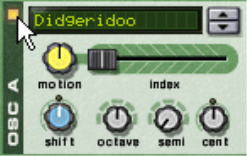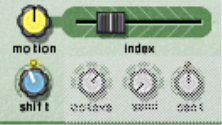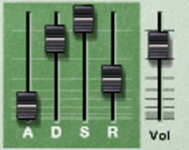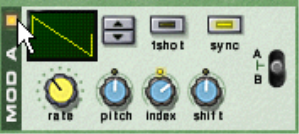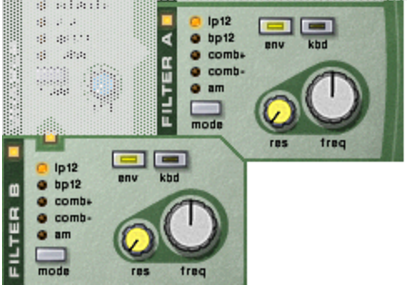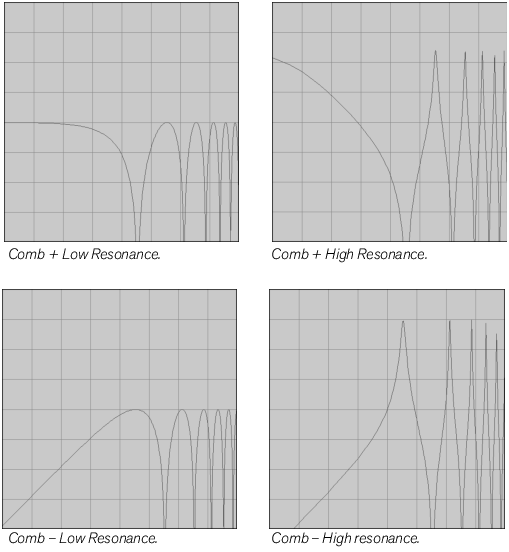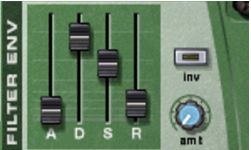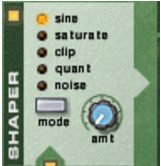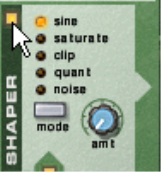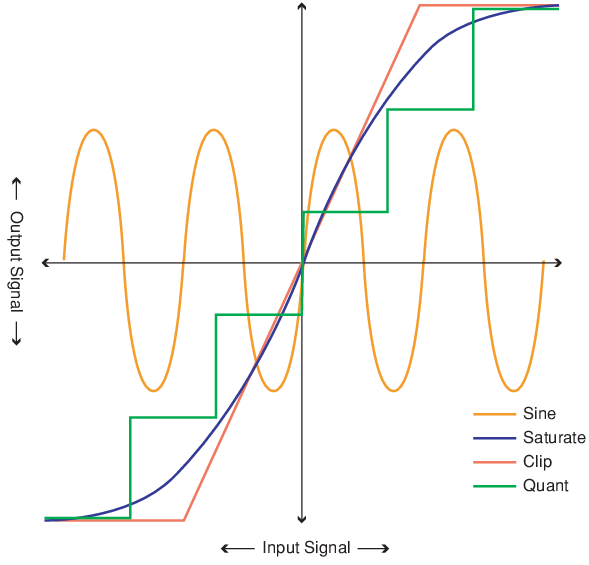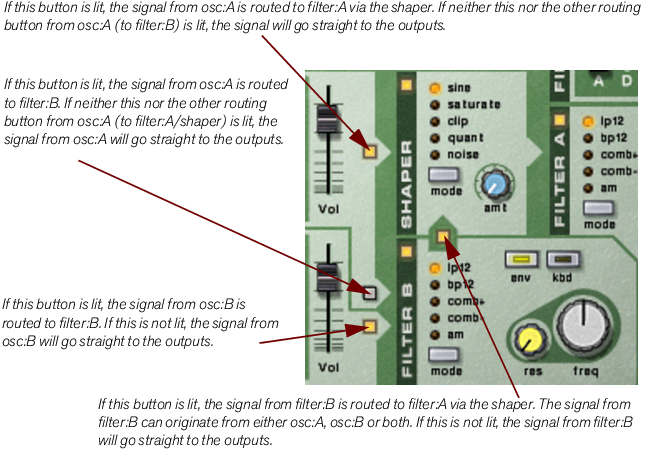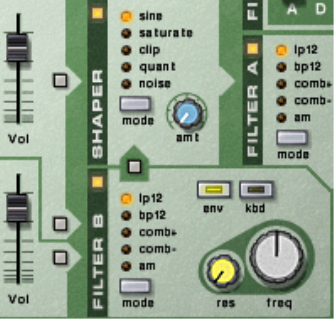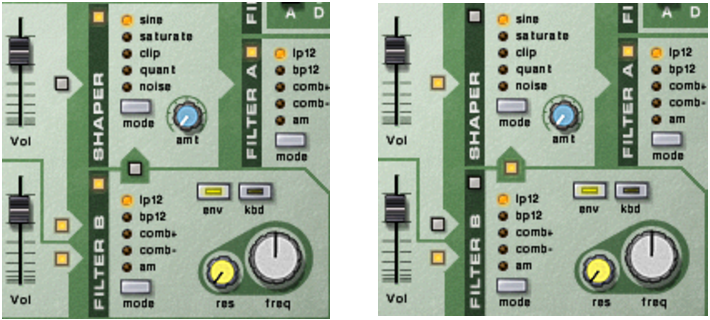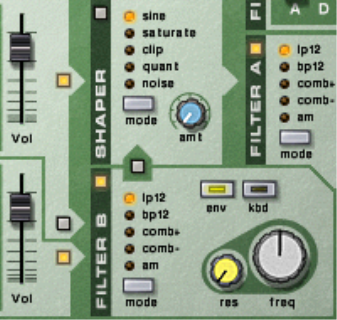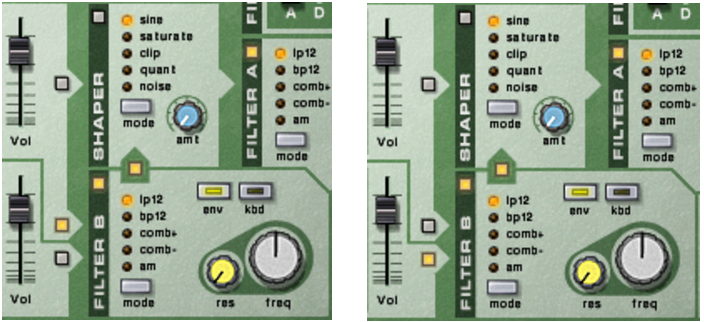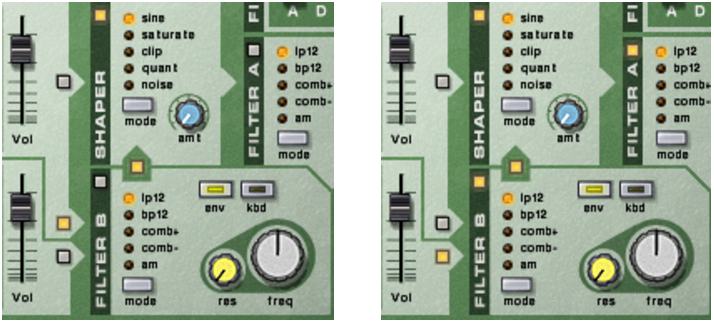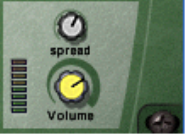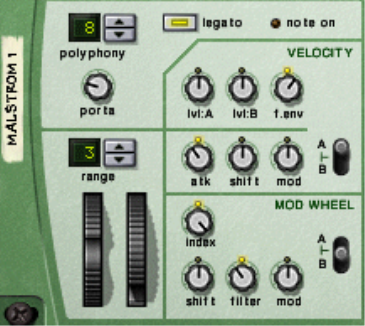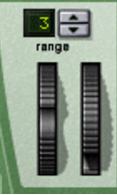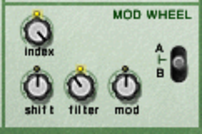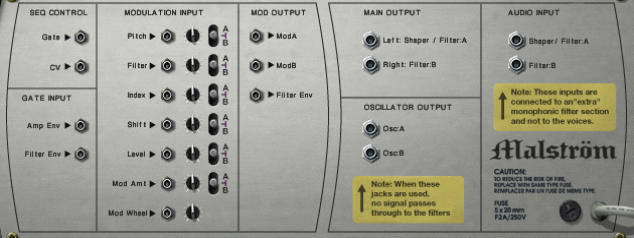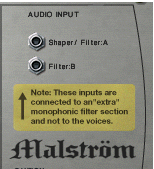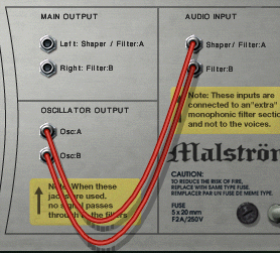See “The Oscillator section” for details.
There is one amplitude envelope for each oscillator and a common envelope for both filters. See “The amplitude envelopes” and “The Filter Envelope” for details.
|
|
Note that the Malström’s Graintables are not all of the same length, and that the range for the Index slider (0-127) does not reflect the actual length of the graintables. I.e. regardless of whether a graintable contains 3 or 333 grains, the Index slider will always span the entire graintable even though the slider range says 0-127.
|
What it actually does is change the pitch of a segment up or down by re-sampling. However, since the pitch you hear is independent of the actual pitch of the graintable (see above), pitch-shifting a segment instead means that more or less of the segment waveform will be played back, resulting in a change of harmonic content and timbre.
When a graintable is looped (i.e. if the Motion knob is not set all the way to the left), it follows one of two possible motion patterns:
The motion speed can be changed with the Motion knob, as described above, but it is not possible to alter the motion pattern of a graintable.
Each oscillator features a standard ADSR (Attack, Decay, Sustain, Release) envelope generator, and a Level control. These are used for controlling the volume of the oscillator. One thing that makes the Malström different from many other synths though, is the fact that the amplitude envelopes are placed before the filter and routing sections in the signal path.
#Vol
#Rate
#Sync
Use this if you want Mod:A to offset the pitch of osc:A, osc:B, or both (see “Setting oscillator frequency”).
Use this if you want Mod:A to offset the index start position of osc:A, osc:B, or both (see “Controlling playback of the graintable”).
Use this to have Mod:A affect the harmonic content of osc:A, osc:B, or both (see “Controlling playback of the graintable”).
Use this if you want Mod:B to affect the motion speed of osc:A, osc:B, or both (see “Controlling playback of the graintable”).
|
•
|
#Mode
You can select one of five different modes for shaping the sound, each with its own characteristics.
|
•
|
|
•
|
|
•
|
|
•
|
|
•
|
|
•
|
|
•
|
|
•
|
|
•
|
|
•
|
|
•
|
This sets modulation wheel control of the currently active graintable’s index (see “Controlling playback of the graintable”) for osc:A and/or osc:B. Positive values will move the index position forwards if the modulation wheel is pushed forward. Negative values will move it backwards.
|
•
|
This sets modulation wheel control of the Shift parameter of osc:A and/or osc:B (see “Controlling playback of the graintable”).
|
•
|
parameter (see “Filter controls”). Positive values will raise the frequency if the
|
•
|
These are the main stereo outputs. Each of the two filters are connected to a separate output, and by connecting both, you can have stereo output. Whether the output really will be in stereo however, is determined by the routing and the Spread parameter. See “Routing” for details about this.
|
|
|
•
|
These inputs let you connect either other audio sources, or the Malström’s own internal signal directly to the filters and the shaper - see “Routing external audio to the filters”.
|
•
|
|
•
|
